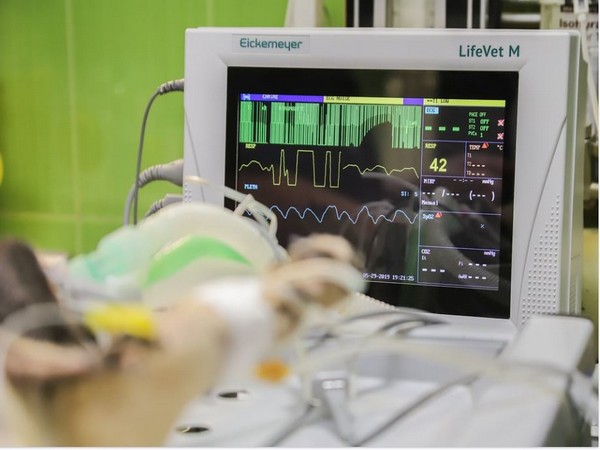
New York [US], February 22 (ANI): The ‘Ross procedure‘ also known as the switch procedure or pulmonary autograft procedure, is a cardiac surgery in which a diseased aortic valve is replaced with the patient’s own pulmonary valve.
According to a new study from The Mount Sinai Hospital in New York City, the Ross procedure may be a more favorable option for aortic valve replacement among patients under 50 years old than more standard mechanical or biological replacements.
The research, published in the ‘Journal of American College of Cardiology’, was the first to compare the Ross procedure to the other options, and showed that it led to improved survival and better outcomes in younger adults. “Not only was survival better than after biological or mechanical aortic valve replacement, it was also identical to the matched U.S. general population. To this day, this is the only operation that has ever been shown to restore survival after aortic valve replacement in young adults,” said lead author Ismail El-Hamamsy, MD, PhD, Mount Sinai Randall B. Griepp, MD Professor of Cardiovascular Surgery at the Icahn School of Medicine at Mount Sinai and Director of Aortic Surgery for the Mount Sinai Health System.
“This is a huge deal because it demonstrates the impact of valve choice in the long term. However, there is an important word of caution: the Ross procedure is a more complex operation and should only be performed in Ross centers of excellence. When done in that setting, this represents a major breakthrough for young patients with aortic valve disease, including young women contemplating pregnancy.”
The aortic valve controls blood flow from the heart into the aorta, the main artery that feeds blood to most of the body. When the valve doesn’t work correctly, patients may need a replacement to preserve the function of the heart muscle and prevent issues such as heart failure or sudden cardiac death. The standard open-heart procedures for repair include mechanical valve replacement–which uses a manufactured valve that requires patients to take life-long blood thinners to prevent stroke, as well as make some lifestyle modifications such as avoiding contact sports that may lead to falls and bruising–or a biological aortic valve replacement from a human or animal donor, which may last up to 20 years, but requires earlier reoperation in younger patients than a mechanical valve.
The Ross procedure is a more complex operation where a surgeon replaces the diseased aortic valve with the patient’s own living pulmonary valve, which is a mirror image of a normal aortic valve. This is the fundamental difference between the Ross procedure and a biological or mechanical valve replacement, which is a critical factor for successful long-term outcomes in patients.
Researchers analyzed records of 1,302 patients between 18 and 50 years old who underwent first-time elective aortic valve replacement surgery in California and New York State between January 1, 1997, and December 31, 2014. Patients were equally divided into three categories using propensity-matched analysis to eliminate any baseline differences; one-third of them had the Ross procedure, one-third had a biological valve replacement, and the rest had a mechanical valve replacement. The retrospective study compared the long-term survival and risk of valve-related complications (including stroke, major bleeding, reoperation, and acute endocarditis) according to the surgical procedure.
Investigators looked at outcomes 15 years post-procedure and found that patient survival was significantly better after the Ross procedure. At 15 years, overall mortality was more than twofold higher if the patients received a biological or mechanical aortic valve versus a Ross procedure.
Furthermore, survival after the Ross procedure (93 per cent survival at 15 years) was identical when compared to people of the same age and sex in the U.S. general population who did not have aortic valve replacement surgery.
In terms of valve-related complications, the Ross procedure was associated with a significantly lower risk of stroke or major bleeding than a mechanical valve (3.8 per cent after a Ross procedure versus 13 per cent after a mechanical valve at 15 years).
Similarly, the Ross procedure was associated with significantly fewer reoperations (17 per cent versus 30 per cent at 15 years) and endocarditis–an infection of the heart tissue–than a biological valve (2.3 per cent versus 8.5 per cent at 15 years). At 15 years, however, the risk of reoperation was higher after a Ross procedure than after mechanical valve replacement (17 per cent versus 7.4 per cent at 15 years).
The study also looked at 30-day mortality after the occurrence of any valve-related complication, including stroke, major bleeding, endocarditis, or reoperation. Researchers found that the lowest mortality was linked to reoperation (1 per cent), whereas if patients had a stroke, major bleeding, or endocarditis, the associated mortality was at least three times higher (5.6 per cent after a stroke and 13.5 per cent after endocarditis).
“This study demonstrates that while there is a definite risk of reoperation after the Ross procedure, the associated risk is low. In other words, this should be seen as a bump on the road, rather than the end of the road. In contrast, if patients suffer a stroke, haemorrhage, or infection, the consequences are much more dire,” explained Dr. El-Hamamsy. “Patients should be given all this data so they can make truly informed decisions about these major life events. Ultimately, the day, the Ross procedure is associated with better survival and fewer complications.”
The authors hoped that this will further encourage the development of regional Ross centers of excellence to improve patient access and safety. Furthermore, Dr. El-Hamamsy’s team, which has the largest experience worldwide with this operation, are working on further improving the durability of the Ross procedure so that even fewer patients ever need a reoperation. (ANI)


















